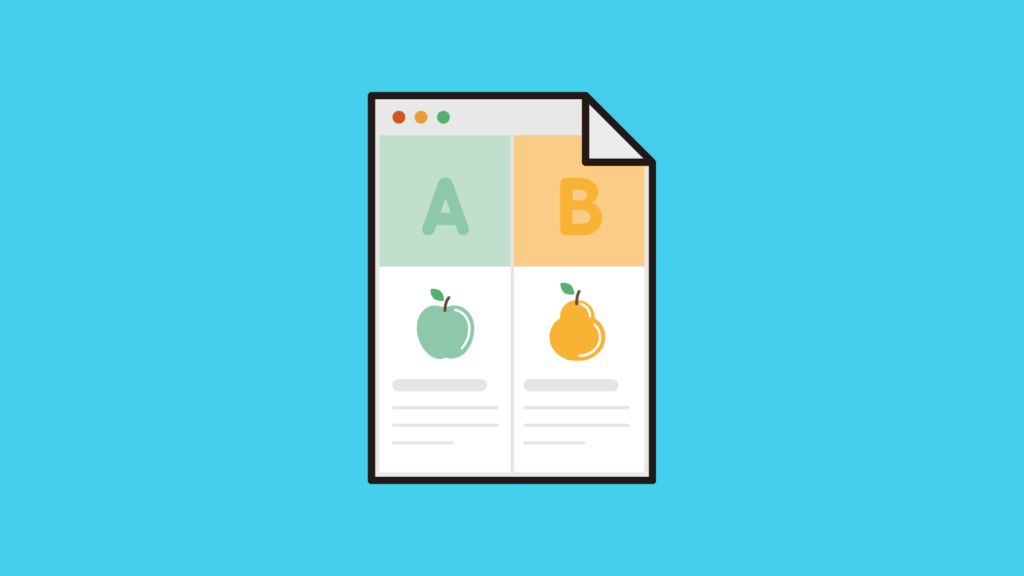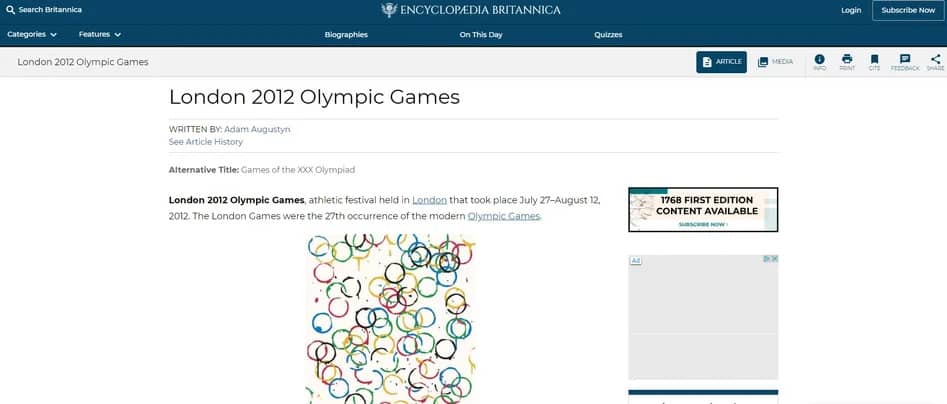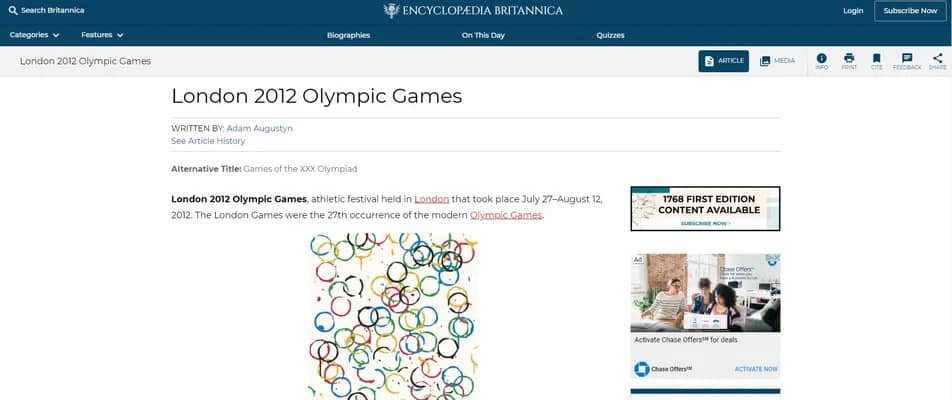How to Increase Conversions Using A/B Testing for Elearning
Successfully sell training online when you use A/B testing today. Check out this guide and learn how to drive eLearning wins with expert testing techniques.

When you sell training online, you constantly look for the best ways to improve your customers’ lives on a day-to-day basis. It can be tough to find ways to make your clients happy – which is why experimentation techniques like A/B testing are so critical to the success of your online brand.
If you’re feeling overwhelmed with the responsibility of keeping eLearning clients happy and satisfied, try exploring A/B testing examples. See how these techniques can help you gain big wins through small, iterative changes.
Ready to optimize your eLearning platform? Sell training online and drive digital success for your business by checking out this guide to expert A/B testing.
What is A/B testing?
A/B, also known as split testing, is an experimenting technique that allows you to compare and contrast versions of a website, landing page or product, to see which one performs better and why. This strategy is used all over the digital landscape and allows you to discover ways to improve digital performance through testing responsive content.
Experts such as yourself can utilize this technique to optimize almost any aspect of your online training platform. From product development to digital marketing, split tests provide training experts an avenue to drastically improve how to sell training online.
What are the benefits of A/B testing?

This form of experimentation is critical to your digital success. Whether you sell training online or dabble in digital marketing, A/B tests are your foolproof means to choosing winning designs for all your eLearning needs.
Here are a few benefits to this tried-and-true technique:
- Make small changes, gain big wins. With this iterative form of testing, you can make small changes and fine-tune your website or product until it is as successful as possible for your brand.
- Develop data-driven solutions to fix common mistakes. You can also benefit from the way this technique can measure results; that is, they provide data-driven solutions for your product, keeping you from making mistakes in sales to fall flat.
- Drive conversions and sales consistently. Split tests easily and consistently increase website conversions and product sales through constant improvement methodology.
- Understand your potential customers better. With repeated and iterative experiments, you’ll discover how your potential customers react to various changes. This will help make your eLearning products more accessible and provide you better insight into all your clients’ wants and needs.
- Access a wide range of technical tools. Overall, this form of experimentation lends itself to a multitude of tools and techniques that you can access and utilize. You can easily build an omnichannel marketing strategy that can ensure digital wins for your products and services in the long run.
Develop the growth mindset: A case study on the experimentation process
Now that you’re familiar with the meaning of A/B testing, you might want to jump straight into this technique so that you can increase conversions with experimentation. But before you do that, you must embrace this tenet of split testing: that the development of a growth mindset is inextricably linked to the success of your experimentation for eLearning.
Let’s break this thought down by observing how the Encyclopedia Britannica Group, a leader in the eLearning industry, increased its conversions through this iterative experimentation process.
1. They began with a simple hypothesis.
The Encyclopedia Britannica Group wanted to answer a simple question: if blue is the universally accepted color for all their links, then their calls-to-action (CTAs) should also be blue to eliminate confusion, right?
To answer this question, they planned to run a simple A/B test for the color of their CTAs. They understood the use of this technique – that it was all about experimentation – so they started optimization with a hypothesis and proceeded with a growth mindset from there.

Figure 1. Control
Photo courtesy of the Encyclopedia Britannica Group via VWO
They also avoided muddling their current query with other elements and variables that could distract them from their initial hypothesis. They focused on the one program to test so that they could gain clear and actionable results at the end of their first run.
2. They focused on the process rather than the result.
The group conducted the initial run to answer their query. The results showed that many users tried to click on CTA options that were blue but not actual links. This meant that their users were very likely to click on CTAs if they were blue, even if they didn’t link out to other places.
That meant that the Encyclopedia Britannica Group somewhat got their answer, right? They could settle with that result and end their process there?
Nope – the Encyclopedia Britannica Group didn’t settle with that result. The group was still curious about the best possible color for their CTAs and in-article links, so instead, they formulated a new hypothesis: that blue should be the only color for their CTAs and links.
Their initial split test served as a method for making an informed decision, which led to a new hypothesis for their experiment. They focused on the process rather than the result, and came up with an insightful next step for their eLearning optimization.
3. They practiced curiosity with a growth mindset.
The Encyclopedia Britannica Group then created a new test with their newest hypothesis. They selected certain articles on their eLearning platform and used three different colors for their in-article links and CTAs: blue, red, and orange.

Figure 2. Challenger
Photo courtesy of the Encyclopedia Britannica Group via VWO
After the experiment’s duration, they discovered that their second hypothesis was also true: that red and orange actually reduced the click-through rates of their links and CTAs by 10%, versus the color blue.
With all those insights in mind, the group was able to drive better click-through rates by only using blue for their links. They also ensured that their non-link texts were not blue, thus eliminating confusion for their loyal online users.
This kind of technique can bring about so many benefits to your business, and you’d want to ensure that the process reaches its maximum potential. As a digital expert, you can achieve similar wins in your eLearning optimization process – as long as you practice curiosity, develop a growth mindset, and have a heart for experimentation.
How to do A/B testing

Now that you have a better understanding of split tests, their many benefits, and the growth mindset, here’s your step-by-step guide to doing A/B testing for your eLearning platform today:
1. List down your objectives.
List your objectives and establish your key performance indicators (KPIs) before jumping into any experiments. This will help you determine the metrics you need to measure the success or failure of your test at the end of the overall run.
By understanding and writing out your reasons for conducting an experiment, you can develop a clear roadmap in line with your business goals and achieve your test’s objectives more efficiently as well.
2. Pick your “control” and “challenger” variables.
The “control” is version A of your variable, while the “challenger” is your version B. It’s recommended that you be specific in picking your variables and try out only one element at a time so that you can return clear results from your test.
Otherwise, you might have a hard time monitoring your data, and you might even get inaccurate results from your experiment at the end of its run.
3. Set up your test
With your objective identified and your variables specified, you can now execute these next steps to help run your iterative experiment:
- Formulate a hypothesis. This refers to the simple question that you want to pose and answer through your experimentation.
- Automate your testing and data collection. You can do this by utilizing A/B testing tools like Google Optimize for simple experiments or Apptimize for specific eLearning platforms and apps.
- Calculate your sample size and duration. This helps you specify the time your overall run will take and the size or breadth of your test’s coverage. Once you’ve set those up, you can let the experiment run accordingly.
4. Proceed to the measurement and analysis of your results
Once your experiment has run its course and you’ve collected enough data, you can measure and analyze your results to see which version of your product or marketing execution performed best among your target audience. This should help to answer your question and optimize your eLearning product in the long run.
All of this is an iterative process, meaning you’re really supposed to take time to do small tests on little changes to your eLearning platform. Practice patience and test things out consistently, and you’ll create the perfect eLearning solution that’ll drive digital wins for your brand.
Key takeaways
The benefits of A/B testing are endless for anyone aiming to sell training online. With this tried-and-true technique, you can optimize the management of crucial clients and drive eLearning success for your business.
Make sure to check out these key takeaways before you go on your exciting experimentation journey with this new technique in your arsenal:
- Experimentation is the key to success – when you have the right mindset. Consistently practice the growth mindset so that you have a mind for curiosity and a heart for experimentation, both of which will help you reach your business goals.
- Remember that A/B testing is iterative, so take your time and start small. Yes, you’re really meant to take the time and do small tests on little changes for your eLearning platform. Be patient.
- Discover the right experts to help you reach specific goals. If you’re starting off with a small business in the eLearning industry, don’t be afraid to ask for help from digital experts who are trained to optimize your platform.
FAQ
How does A/B testing help increase conversions?
A/B testing allows you to compare two versions of a webpage, email, or ad to determine which performs better. By identifying elements that resonate with your audience, you can optimize for higher conversion rates.
What are some elements that can be tested using A/B testing?
Elements commonly tested in A/B testing include headlines, calls-to-action, images, layout designs, forms, and colors to identify which combinations drive the most conversions.
Is it essential to have a hypothesis before conducting an A/B test?
Yes, having a hypothesis helps guide your testing strategy and ensures you’re testing changes that are likely to impact conversions. It also provides valuable insights into user behavior and preferences.
How long should I run an A/B test to see meaningful results?
The duration of an A/B test depends on factors like your website traffic and the magnitude of the expected impact. Typically, tests should run until statistical significance is achieved to ensure reliable results.
Can A/B testing be applied to different marketing channels?
Yes, A/B testing can be applied to various marketing channels, including websites, email campaigns, social media ads, and landing pages, to optimize conversions across your entire digital presence.
Are there any best practices for setting up A/B tests?
Best practices for setting up A/B tests include testing one variable at a time, ensuring proper sample sizes, and using randomized assignment to avoid bias and ensure accurate results.
How do you analyze the results of an A/B test?
Analyzing A/B test results involves comparing conversion rates, calculating statistical significance, and determining which variant performed better. It’s essential to interpret data accurately to draw actionable insights.
Can A/B testing help improve user experience as well as conversions?
Yes, A/B testing not only helps increase conversions but also provides insights into user preferences and behavior, allowing you to enhance the overall user experience on your website or app.
Is it possible to run multivariate tests alongside A/B tests?
Yes, while A/B testing compares two variations of a single element, multivariate testing compares multiple elements simultaneously. This allows for more complex experiments but may require larger sample sizes.
How often should I conduct A/B tests to continuously optimize conversions?
A/B testing should be an ongoing process, with tests conducted regularly to identify and implement improvements continually. The frequency of tests may vary depending on your goals and resources.
Author Bio
 Gary Viray is the founder and CEO of Propelrr, a data-informed digital marketing agency operating both in the United States and the Philippines. Gary’s insights are founded on decades worth of experience in various digital marketing principles, with particular expertise in conversion rate optimization (CRO), and marketing experimentation. He usually writes for HubSpot, AWR, SEJ, Rappler, e27, and more.
Gary Viray is the founder and CEO of Propelrr, a data-informed digital marketing agency operating both in the United States and the Philippines. Gary’s insights are founded on decades worth of experience in various digital marketing principles, with particular expertise in conversion rate optimization (CRO), and marketing experimentation. He usually writes for HubSpot, AWR, SEJ, Rappler, e27, and more.
Create more and better content
Check out the following resources and Grow!